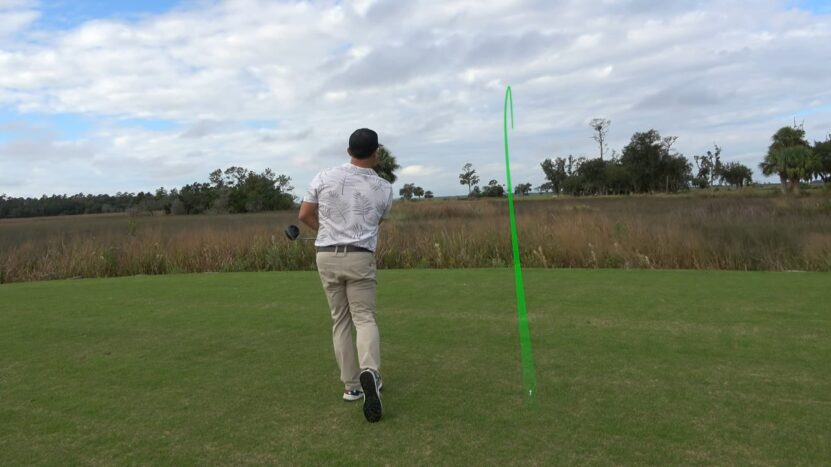If you’ve ever watched a golf tournament or been to a golf course, you’ve likely heard the term “fairway.” But what exactly is a fairway? It is one of the most critical components of a golf course, a linchpin in the overall strategy of the game, and a term that every golf enthusiast should understand.
Today, we’re going to dive deep into the fairway, exploring its importance, design, and role in the game of golf. Whether you’re a seasoned golfer or a beginner, this comprehensive guide will provide you with a wealth of valuable insights.
Understanding the Golf Course Layout
Before we delve into the fairway, it’s essential to grasp the overall layout of a golf course. A golf course usually consists of 9 or 18 holes, each with distinct parts: the tee box, fairway, rough, hazards, and the green, which houses the hole itself.
- Tee Box: This is where every golfer begins their journey on each hole. It’s typically a level area with markers indicating where to tee off.
- Fairway: The trimmed grass area extending from the tee box to the green.
- Rough: The area surrounding the fairway and green is usually characterized by longer, untrimmed grass.
- Hazards: These include sand bunkers and bodies of water designed to challenge the golfer and increase the difficulty of the course.
- Green: The smooth, well-manicured grass surrounding the hole where players aim to putt their golf ball.
The Fairway: A Closer Look
Now that we have a general understanding of the golf course layout let’s delve into the fairway.
It is the “runway” that guides you from the tee box to the green. It’s the area of the course where the grass is cut short and even creates a clear path for the golfer. Its width varies, but it typically ranges from 30 to 50 yards in professional tournaments.
But what makes it so special?
Better Lies

The short, even cut of the grass in the fairway provides the golfer with the best lie (where the ball rests). This allows for optimal contact between the club and the ball, enabling greater control over the direction and distance of the shot.
Strategic Play
The fairway is strategically significant as it represents the ideal path to the green. A golfer’s aim is to land their ball on the fairway with each shot, avoiding the hazards and rough, which can negatively impact their score.
Designing a Fairway: An Art and Science
Designing a fairway is a delicate balance of art and science, requiring a deep understanding of the game’s physical and psychological aspects. Here’s what goes into designing it:
- Terrain: The terrain dictates the fairway’s shape and contour. Natural features like hills, valleys, and trees can be used to add challenge and aesthetic appeal.
- Length and Width: The hole’s length and the fairway’s width are determined based on the desired difficulty. Shorter, wider fairways may be easier for amateur golfers, while longer, narrower fairways present a challenge for professionals.
- Placement of Hazards: Strategically placed hazards like bunkers and water bodies can force golfers to adjust their strategies, enhancing the game’s challenge and excitement.
Tips for Success
Now that we understand what a fairway is and its role in the game, let’s explore some strategies for mastering it:
- Plan Your Shots: Knowing the distance to the green and the layout of the fairway can help you select the right club and aim your shot to land in the most advantageous position.
- Play to Your Strengths: If you’re more accurate with a 7-iron than a driver, don’t hesitate to use it off the tee. The key is to keep your ball on the fairway.
- Practice Your Long Game: The ability to hit long, accurate shots can give you a significant advantage, allowing you to reach the green in fewer strokes.
- Work on Your Mental Game: Golf is as much a mental game as it is physical. Staying calm under pressure, maintaining focus, and strategizing effectively are all crucial to succeeding on the fairway.
The Fairway and Golf Etiquette
Beyond understanding the fairway’s technical aspects, it’s also important to learn about golf etiquette related to it:
- Repairing Divots: A divot is a piece of turf displaced when a golfer hits the ball. It’s good etiquette to replace the divot or fill it with a seed and soil mixture provided by the course.
- Keeping Pace: Slow play can be frustrating for others. When on the fairway, be ready to hit when it’s your turn and keep up with the group ahead.
- Avoiding Damage: Carts can damage the fairway. Stick to the cart paths when possible, and avoid driving on the fairway in wet conditions.
The Historical Evolution of Fairways

While we’ve established the critical role that fairways play in contemporary golf, it’s also fascinating to trace their historical evolution.
Originally, golf courses—predominantly in Scotland—were laid out on links land (coastal strips between the beach and the farmland). These courses didn’t have the well-manicured fairways we see today. Instead, the land’s natural topography and vegetation shaped the course, with the “fairway” often being a stretch of shorter grass created by grazing animals.
As golf spread across the world, course design evolved. Landscape architects began designing fairways intentionally, using grass varieties that could be closely mowed for optimal playability. Today, golf course superintendents meticulously maintain fairways, managing factors like grass height, moisture levels, and pest control to keep them in top condition.
The Role in Professional Golf
In professional golf, fairways take on even greater importance. Tournaments often track a statistic known as “Fairways in Regulation” (FIR). FIR measures the number of times a player’s tee shot lands and stays in the fairway. High FIR percentages correlate strongly with successful performance in tournaments, highlighting the strategic importance.
Courses hosting professional tournaments often feature narrower fairways and higher roughs, making precision off the tee a premium. Famous fairways, like the 18th at Pebble Beach or the 13th at Augusta National, are known worldwide for the unique challenges they present to the players.
The Impact of Technology

The last few decades have witnessed significant technological advancements in golf, from equipment like clubs and balls to ground maintenance machinery and irrigation techniques. This technology has had a direct impact on fairways.
Modern mowing equipment allows for precise control over grass height, leading to fairways that are not only aesthetically pleasing but also consistent in playability. GPS-guided irrigation systems ensure that fairways receive the perfect amount of water, enhancing their health and resilience.
In terms of equipment, the introduction of technologically advanced clubs and balls has enabled golfers to hit longer and more accurate shots, challenging course designers to create longer and more complex fairways.
Final Words
The fairway in golf is more than just a stretch of short grass. It’s a pivotal element of the game, a testament to strategic course design, and an opportunity for golfers to demonstrate their skill and strategy. By understanding its role, mastering its challenges, and respecting its care, we can all enjoy the beauty and complexity of the fairway—and the game of golf as a whole.
Whether you’re a seasoned golfer or a beginner, we hope this guide has given you a deeper appreciation for the fairway’s importance and the game of golf. After all, understanding the game’s nuances is the first step to improving your performance and heightening your enjoyment of this timeless sport.

